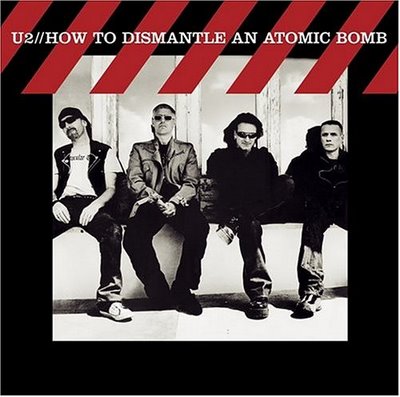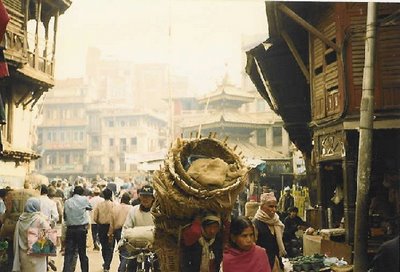
Would you do it? How would you do it? Is it desirable? Is it worth it? Is it possible?
Is it desirable? I think yes. To dismantle the two armies before going into the constituent assembly elections would be a great way to ensure free and fair elections to the assembly. A population that has suffered from both for a decade will still feel a cloud of fear as it goes into the polling booths with the two armies standing. According to the 12 point agreement, the two armies will still be standing when we go for the assembly elections. I think that can prove problematic. And we can not afford to not have free and fair elections to the constituent assembly, now that we have it: the parliament voted for it unanimously.
The army as a social institution has been as archaic as the monarchy. Both symbolize feudal mindsets. Dismantling it is as appealing as the idea of a republic. How else could the country get a fresh start?
Nepal is a poor country. It needs to be spending on education, health and micro credit, not on defense.
How Would You Do It
The idea would not be to render 60,000 RNA soldiers - or however many there are - jobless. The same applies to the 12,00o Maoist soldiers, or however many there are. The idea would be to offer them all a smooth transition into the private sector.
That would require money. Where would that money come from? There are several sources. If you were to sell the arms and ammunitions the two armies have, that will generate a pot of money. The RNA has a huge fund which is money the RNA has made through its peacekeeping operations to do with the UN. And the Maoists are the richest political party in Nepal: they are going to have to cough up some money. But the biggest chunk will come from the foreign powers, namely India, China, America, Europe and others. If they have sunk tens of millions of dollars into military aid to prevent the worst case scenario, I am sure they will pump in tens of millions of dollars for peace. Because Cambodia will not happen in Nepal.
What will you do with that money? The idea is not to offer job guarantees to these soldiers in the two armies. The idea is to make their transition from the army into the private sector rather smooth. It will be like offering them an early retirement. You would perhaps give them each a year's worth of salary. And you would create a fund that will give them low interest loans if some of them want to start businesses. Or you would give them super low interest loans if they might want to go to school, college, vocational school, job training. As to how much they would get would be determined by a formula that takes into account as to how much they are making now. The top salaried people would get proportionately more.
Likely noone will get devastated economically. They will likely stay in similar income brackets. It will not feel like their lives got disrupted. It will feel like a career change.
GI Bill of Rights - Wikipedia, the free encyclopedia
The GI Bill was designed for American soldiers returning home from World War II. There was no way all of them or even many of them could have stayed on in the army. And the education they received is a big reason for the amazing economic boom America saw over the next few decades.
Will It Be Done
I don't know. It depends on many things. Most of all it depends on how gutsy the seven party alliance leadership can be, how imaginative. This is a bold vision.
I think it should be done, and I sure am pushing for it.
Double Digit Growth
I think dismantling the two armies is key to being able to imagine rapid economic growth for Nepal once it becomes a federal republic.
Ending 238 Years of Civil War in Nepal
Dr Brian Cobb, May 2
King of Nepal bowed before peoples' power By Michael Van De Veer Asian Tribune - Bangkok,Thailand
IS NEPAL’S ORANGE REVOLUTION SQUEEZING KING INTO EXILE ?
Kathmandu, Nepal
April 30, 2006
The struggle to create a Democratic Republic in Nepal has surprised the world.
People’s Power and largely peaceful nationwide demonstrations have laid the basis for Nepal to break the chains of a 208-year-old Monarchy.
Many compare the recent peoples’ victory to the “Peoples’ Power revolution” in 1968 when the authoritarian regime of Ferdinand Marcos was brought to an end in the Philippines, or the successful nonviolent “Orange Revolution”in the Ukraine in 2004.
In Kathmandu a 19-day general-strike left piles of rotting garbage lining the streets and there were serious water and food shortages, as well as LP-cooking-gas, kerosine, aircraft-fuel and medicine shortages. Each day the peaceful pro-democracy demonstrations grew, and each day they were met with increased Police and Army brutality. People from every level of society, even children, were brutalized, shot with live and rubber bullets and in at least 14 cases, killed by Security Forces.
At around 5:00 p.m. last Monday the 24th of April, as an estimated 2-million Pro-Democracy demonstrators were encamped around Ring Road which encircles the Capital, the enraged Crown Prince Paras piloted the Royal helicopter around Kathmandu Valley to survey the massive crowd.
As reported by a Nepali Weekly, Jana Astha, at around 6pm.the Crown Prince stormed into the Palace and along with other Royal relatives demanded the “king hang on to power and incited the Security forces to shoot at demonstrators.”
The embattled King, faced with a bloodbath, addressed the Nation at 11:30 p.m.(April 24) on local TV and radio. In a few words the King relinquished absolute power and reinstated the parliament which had laid dormant for four years.
It reportedly “took the King to nearly midnight to pacify his enraged son and send him back to his residence.”
Within hours the 7-Party Alliance (SPA) chose the ailing Congress Party leader, 84 year old G.P. Koirala, as the Prime Minister-designate.
On Friday, April 29th in the dusty parliament building at Singhadubar, the historic Parliament meeting was convened at 5:30 by Deputy Speaker Chetra Lakha Yadav. Her militant voice filled the chamber and the message from PM-Designate G.P. Koirala was met with thunderous applause.
For the 1st. Time in history there was no Crown in the Gallery Batithak and Royal-Power was replaced with People’s Power. Even with senior political leaders assuring that the Parliament is committed to the 12-Point Plan Agreement and Constituent Assembly elections, and tens-of-thousands of demonstrators demanding an end to Autocracy, the establishment of a Republic, the parliament adjourned without voting on these important matters.
A Constituent Assembly not only represents political jurisdictions but caste, class, oppressed minorities, unions, civil society groups, women and other under represented groups. In 1786 after the French Revolution, the first Constituent Assembly was formed to draft a constitution. This form of drafting a constitution was followed in 1918 when, during the October-revolution, the Russians adopted a draft-constitution. In 1946 a Constituent Assembly met in New Delhi to draft a constitution for an India. It took 165 days to complete this historical task.
It is clear that anti-monarchy sentiment is seething and that if the Maoists are brought into the government, the King, the Crown Prince and the Royal Family who no longer enjoy the support of the government or the Nepali people will either remain in Nepal as ordinary citizens or have to seek asylum and exile.
D. Michael Van De Veer-Freelance Journalist-in Kathmandu
Contributor to UnitedWeBlog-Voice of Democratic Nepal, &
Pacifica’s Free Speech Radio News.
Member: SAJA (South Asian Journalist Association).
Host OUT OF THE BOX KKCR-FM www.kkcr.org
PO Box 21218, Thamel, Kathmandu, Nepal
